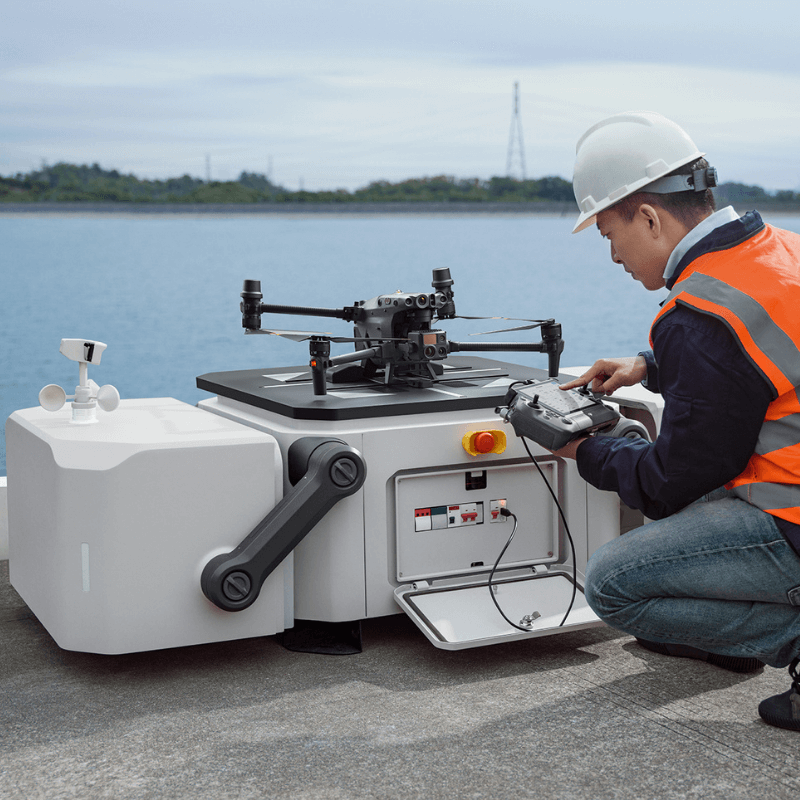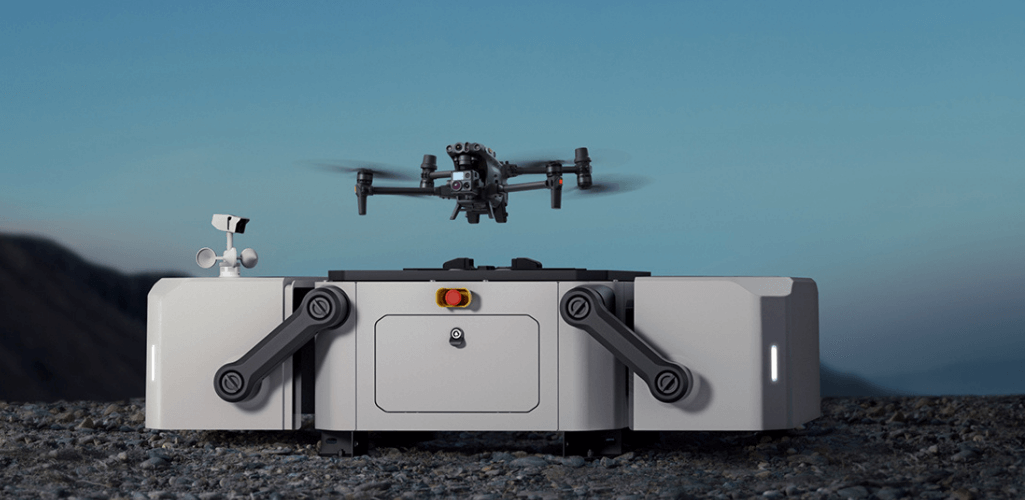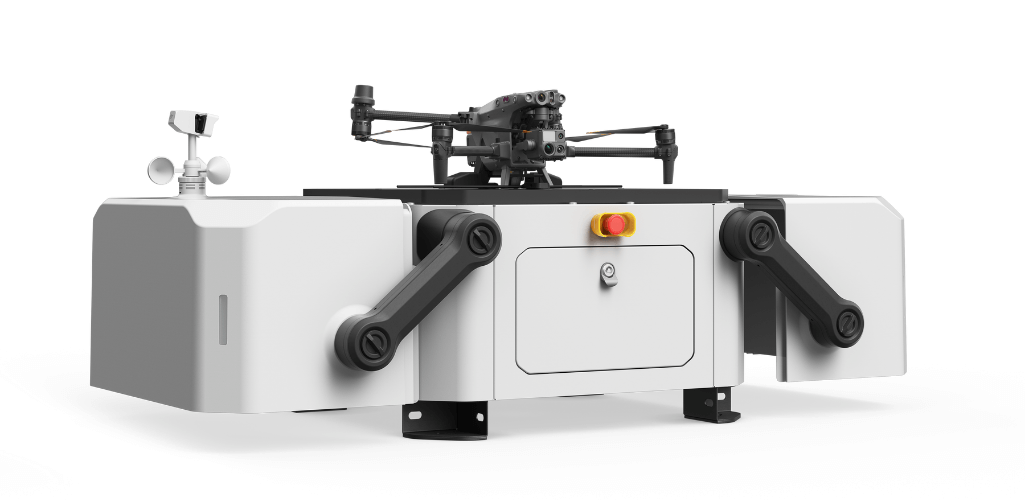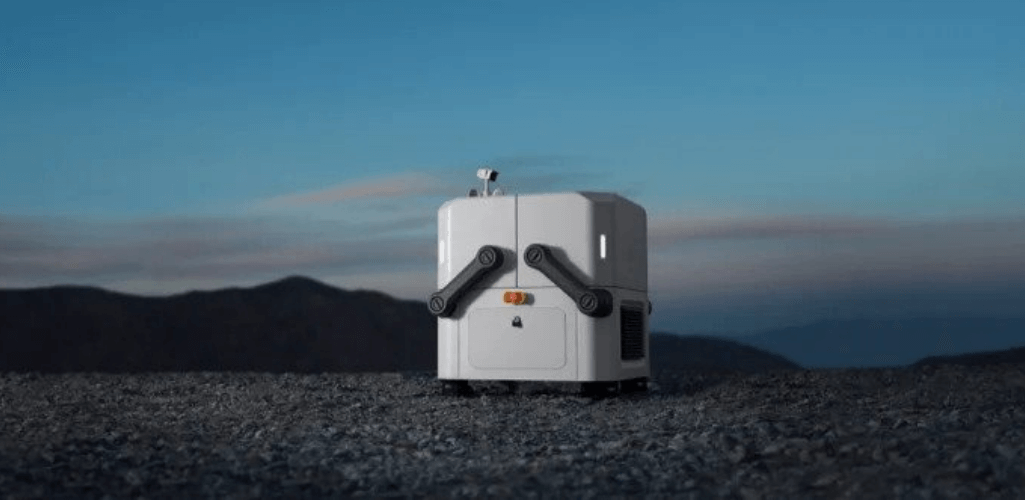
Products
Published on 21 Mar 2022
James Willoughby
How Drone In A Box Will Transform Autonomous Deployment
DJI Dock has major benefits for the commercial and enterprise drone industry.

Drones flying autonomously, automatically deploying from and returning to self-contained landing boxes: It sounds like a scene plucked straight from a sci-fi movie.
But the emerging drone in a box concept is becoming a reality. And now DJI has got in on the act with the release of its M30 Series and DJI Dock solution - as shown in this video.
In a drone industry packed full of potential, it is a truly exciting form of innovation, with the power to revolutionise the world of work.
More than just a fancy gimmick, the practise of drones operating independently or launching remotely via a docking station and flight planning software opens up some exciting opportunities. These include remote inspections of critical infrastructure, or automatic deployment when an alarm triggers to bolster security at a sensitive site.
The door isn't fully open, and there is still some way to go. Legislation limitations, in the UK for instance, currently temper the full use of autonomous deployment: Like unresolved issues around BVLOS - which is a core element of the drone in a box principle.
But it is far from a pipe dream. Companies around the world are already in this space with solutions on the market. There is a global portfolio of drone in the box success stories. And the newest entry to the market - DJI's drone in a box solution (pictured below) - adds further innovation to this area.

It has set the stage for establishing a truly exciting new frontier in the drone industry.
Drone In A Box Vs Traditional Drone Deployment
Traditional drone usage consists of an unmanned aircraft and pilot at the scene. Yes, flight planning apps do create some form of automation, but the pilot is always present with control in hand - and in most cases the operator is required to keep the aircraft within line of sight. There's also further manual aspects, like charging batteries or extracting drone data.
Drone in a box systems, on the other hand, can be deployed autonomously/remotely from a docking station that also functions as a landing pad and charging base.
After carrying out an automatic mission or pre-programmed list of instructions - with capacity for a human to monitor the flight from afar - they return to their base to charge and/or upload information.
What Is Required For A Drone In The Box?
The drone in a box anatomy consists of several parts.
Firstly you need a drone that can be charged automatically: With options including charging contacts or an automated battery replacement in the box.
The box serves as a platform for the drone to take off and land. It is designed in such a way that it can charge the drone or automatically replace the battery. During the charging process or when the drone is not meant to be in the air, the box is a secure repository.

To complete the picture, control software plans, flight applications and routes are required.
Drone In A Box: How Will It Change The Drone Industry?
The drone in a box application involves dispatching UAS on automated missions, such as for infrastructure inspections, surveillance and more.
The potential is huge.
For instance, drone in a box systems can be used to enhance security at a sensitive site or protect critical infrastructure, automatically deploying when alarms are tripped to provide close-up footage. or carrying out scheduled patrols.

For utilities, drone in a box solutions can be used to support operations at power plants - launched remotely to capture aerial data which is streamed to personnel in real time to monitor defects, gas/water leaks or other maintenance abnormalities.
A drone docking station can be placed at a fixed position at a specific site, or vehicle-mounted as a mobile solution - ideal for public safety and search and rescue operations.
Drone In A Box: UK
Current legislation in the UK means that a drone in a box could work, but requires specific operational authorisation from the Civil Aviation Authority (CAA).
Presently, there is a sort of happy medium: Whereby a drone could be deployed on an automated flight from a docking station, but a Remote Pilot would need to be present to keep the aircraft in visual line of sight.

It provides a stepping stone for the future, pushing towards the Holy Grail of automated or remote deployment, facilitating BVLOS operations and safe passage through specially designated unmanned corridors and other segregated airspace.
And with BVLOS trials and discussions on going, developments in this area could be forthcoming fairly soon to further facilitate the drone in a box revolution.
Further to this, DJI has said that it hopes its docking system will become a powerful force for change in regard to current restrictions - in numerous jurisdictions around the world - on BVLOS and remote and autonomous flights, adding: 'With fully-programmable operations, unmatched durability, and smart redundancy features, this is the next step in drone innovation'.
Drone In A Box: Summary
Drone in a box. These four words represent an exciting move towards fully-automated workflows - whether that's conducting on-demand tasks or pre-programmed missions.
It is a concept which facilitates intelligent drone flights to collect aerial data and improve security, even in complex industrial environments.
Drone in a box success stories around the world have already demonstrated the potential of this technology, and there is sure to be more to come from this space in the future. The recent release of the DJI drone in a box solution is testament to this.
